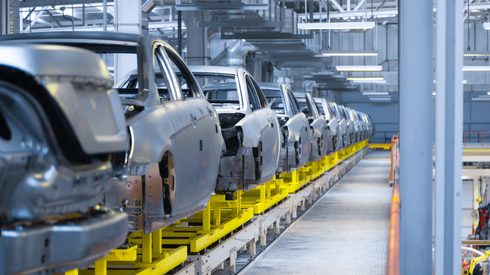Market sources estimated that China has sent approximately 300,000-400,000 tonnes of slab to the rest of the world since the war started on February 24, particularly to Europe and Italy. At least four major Chinese steelmakers have sold slab to Europe, sources said, causing tightness in domestic slab and hot-rolled coil supply.
This has also sent a ripple effect down the supply chain in Asia; slab buyers are short of materials and are receiving offers at $950-980 per tonne cfr Southeast Asia.
The last slab transactions were heard at $1,030-1,040 per tonne cfr Europe, with the latest offers at $1,050 per tonne cfr Europe. Major Southeast Asian steelmakers in Indonesia and Malaysia have also sold slab cargoes to Europe at $1,030-1,035 per tonne cfr.
Offers for Chinese slab were at $830-870 per tonne fob China in the week ended March 25, while HRC produced by one of the Chinese mills exporting slab was offered at around $840 per tonne fob.
“China hardly exported slab before the Ukraine war,” a second Chinese trader said. Data from China’s General Administration of Customs shows that China exported only 2.3 tonnes of slab under the Harmonized System (HS) code of 72071200 in 2021, while there were no exports in the first two months of 2022.
The high export volumes of semi-finished steel such as slab and billet have raised worries that China will implement export duties on them.
Ukrainian and Russian supply had been withdrawn from the global seaborne markets due to steelmakers reducing output or stopping operations due to the war, or suffering port blockades that had closed off shipping routes to the rest of the world.
Buyers have also been wary of purchasing Russian slab due to the mounting sanctions on Russian oligarchs and their companies.
Increased European slab demand
Immediately after the Russia’s attack on Ukraine, European heavy plate re-rollers began to look for alternative slab sources and deals were made for the material from Asia.
EU demand for slab increased further in the middle of March. Integrated coil producers have also been aiming to book import slabs from China, India and Brazil to replace missing raw materials from Russia and Ukraine.
Steelmakers in Central Europe were the most affected by the war because they relied heavily on raw materials supplies from Ukraine and Russia. Northern European and Italy have also been seeking the semi-finished products; some were not able to access sufficient raw materials from either traditional or alternative suppliers and others have stopped bookings from Russia.
Although slab and raw materials from Russia are not under sanctions in the EU, financial sanctions remain in place.
“Vitkovice Steel [in Czech Republic] is not quoting at all and I strongly doubt that it will receive any slabs from [Russia’s] Evraz, as I simply cannot imagine Polish workers discharging Russian vessels in the current situation, even if the Swift [payments] issues can be solved,” a German source said.






